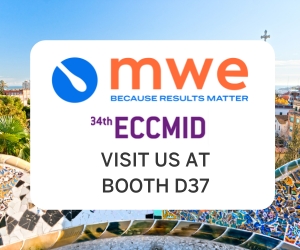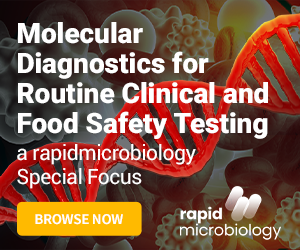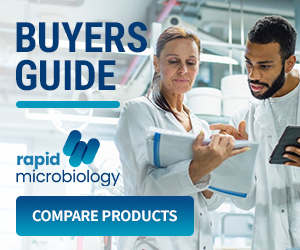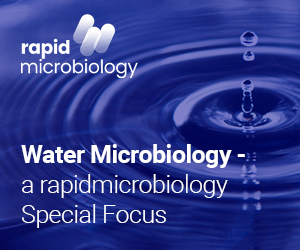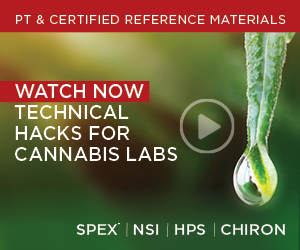| In March, FDA proposed new regulations to require 'current good manufacturing practices' (CGMP) in the industry to help reduce risks associated with adulterated or misbranded dietary supplement products. Microbial contamination is one of the issues that will be addressed by the new FDA regulations, as some recalls were associated with microbiological problems,
Faster and more streamlined microbiological tests are required by this industry to meet the new challenges. Why Use the BioSys System? The BioSys system, using its rapid optical technology can deliver microbiological test results in hours not days, providing significant benefit to the operation of manufacturing companies.
Why the BioSys?
The following are just a few of the reasons for replacement of traditional microbiology with the BioSys technology:
- Provide a risk management solution
- Address increase in production demand
- Address increase in laboratory workload
- Resolve problems of limited warehouse space
- Alert personnel to contamination problems sooner
- Simplify laborious microbiological laboratory protocols
- Deliver faster turn-around-time for screening of ingredients and raw materials
- Improve decision making with data management
- Utilize powerful trend analysis software for HACCP
| 
Ready to use vials | Nutraceutical Applications of BioSys
Several experiments using finished products and raw material samples were performed on the BioSys instrument. The 'dilute to spec' approach was used in this study. Samples were diluted so that only samples with counts above the specified level will detect.
The instrument is capable of performing the following assays: total aerobic count (TVC), coliform, yeast and molds and generic E. coli.
The data shows that if organisms above the specified level are present, the instrument will detect their presence. The sample that did not contain organisms by the current methodology did not detect in the system.
The methodology used with the BioSys system involves a 1:10 dilution or higher in buffered phosphate, followed by the addition of the diluted sample into the ready to use vial and the insertion of the vial into the instrument.
Test Results
Total Plate Count Specification: 1,000- 100,000 cfu/ml BioSys vial: TVC vial or Yeast Acid vial without inhibitors.
Procedure: Add 1 ml of the appropriate dilution to the vial. If organisms above the specified level are present, they will detect in the system. The assay time is 14-20 hours.
Results: It is interesting to note that for many nutraceutical samples it was very difficult to count the organisms in the plates. Colonies were difficult to distinguish from particles that were in the samples. In all of the samples that did detect in the BioSys instrument, organisms were isolated by streaking a loop full of liquid from the vial onto a Standard Methods Agar plate. This result indicates that the total aerobic count was above the specified level. All of the samples that were spiked with a mixture of different organisms detected within 20 hr. There was 95% agreement between the instrument results and the standard methods. The data indicates that if bacteria are present, they will detect easily in the BioSys system. The dilution scheme utilized ('dilute to spec') will ensure that only samples with counts "above the specified level" will detect. If there are no detections in the system, the result reported would be <specified level.
In 5% of the samples that indicated detection-times in the BioSys instrument, with a typical growth curve it was difficult to ascertain if the plates contained count above the specified level. The vial did contain organisms above the specified level. BioSys instrument detected more contamination than was indicated by the agar plates. It is often very difficult to determine contamination in agar plates that have a large amount of debris from the sample being tested.
Yeast and Mold Specification: 10-200 cfu/ml BioSys vial: Yeast Acid vial with antibiotics (0.1 ml/vial) or Mold and Yeast vial with antibiotics (0.05 ml/vial) can be used. The advantage of the Yeast Acid vial is its rapidity; the disadvantage is that is does not normally detect molds. The advantage of the Mold and Yeast vial is that it does detect both mold and yeast. Its disadvantage is that it is slower.
Results: 100% agreement was obtained between the BioSys system and the current method. In using the Yeast Acid vial, detection times of 17-18 hours were obtained vs. 4 days required by the standard methodology. Molds were detected within 70 hours vs 5 days for the standard method.
Coliform Specification: 10-50 cfu/ml BioSys vial: Coliform vial. It is suggested to add 1 ml of a 1:10 dilution of the product into a Coliform vial.
Results: In 79% of the samples, there were no coliforms present by either the BioSys method or Plate Count method. In 18% samples, coliforms were detected by both methods. In 3% of the samples a discrepancy was found, were there were detections by the BioSys instrument and no count by the MPN method. In 2% of the cases, a coliform was isolated from the vial indicating the better accuracy of the BioSys vial. In 1% of these samples the organism isolated from the Coliform vial was found not to be a coliform. This happened in only a single product. The addition of 0.1 ml of a Bile Salt solution was added to the vial to inhibit the growth of the non-coliform organism. This solution may need to be added to this product and other similar product s if false detections such as this occur on a regular basis. When coliforms were present, they did detect in the system in less than 14 hours.
E. coli Specification: negative, one ml being tested BioSys vial: E. coli vial. It is suggested to add 1 ml of a 1:10 dilution of the product into the E. coli vial and add 4 ml of sterile water.
Results: None of the samples tested were naturally contaminated with E. coli. There was 100 % agreement between the two methods. All samples inoculated with E. coli detected within 14 hours.
Conclusion :Microbiological data can be generated in hours, not days, saving time and labor for plant operations. BioSys is a valid alternative to traditional microbiological methods, with significant benefits to the industry. There was a very good correlation between the BioSys results and the standard method results. In many cases, the BioSys data was more reliable and easier to interpret than the standard method results.
|


